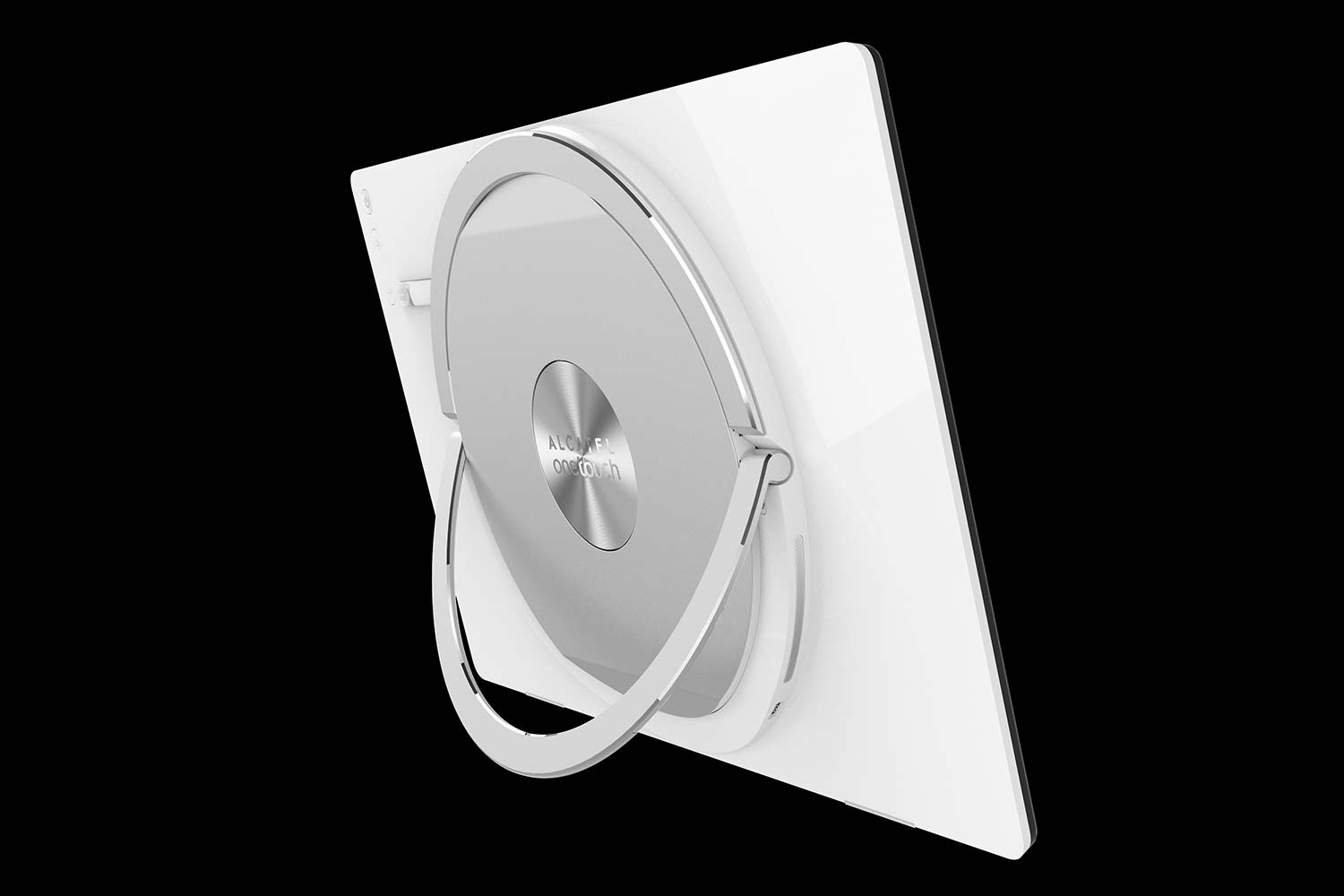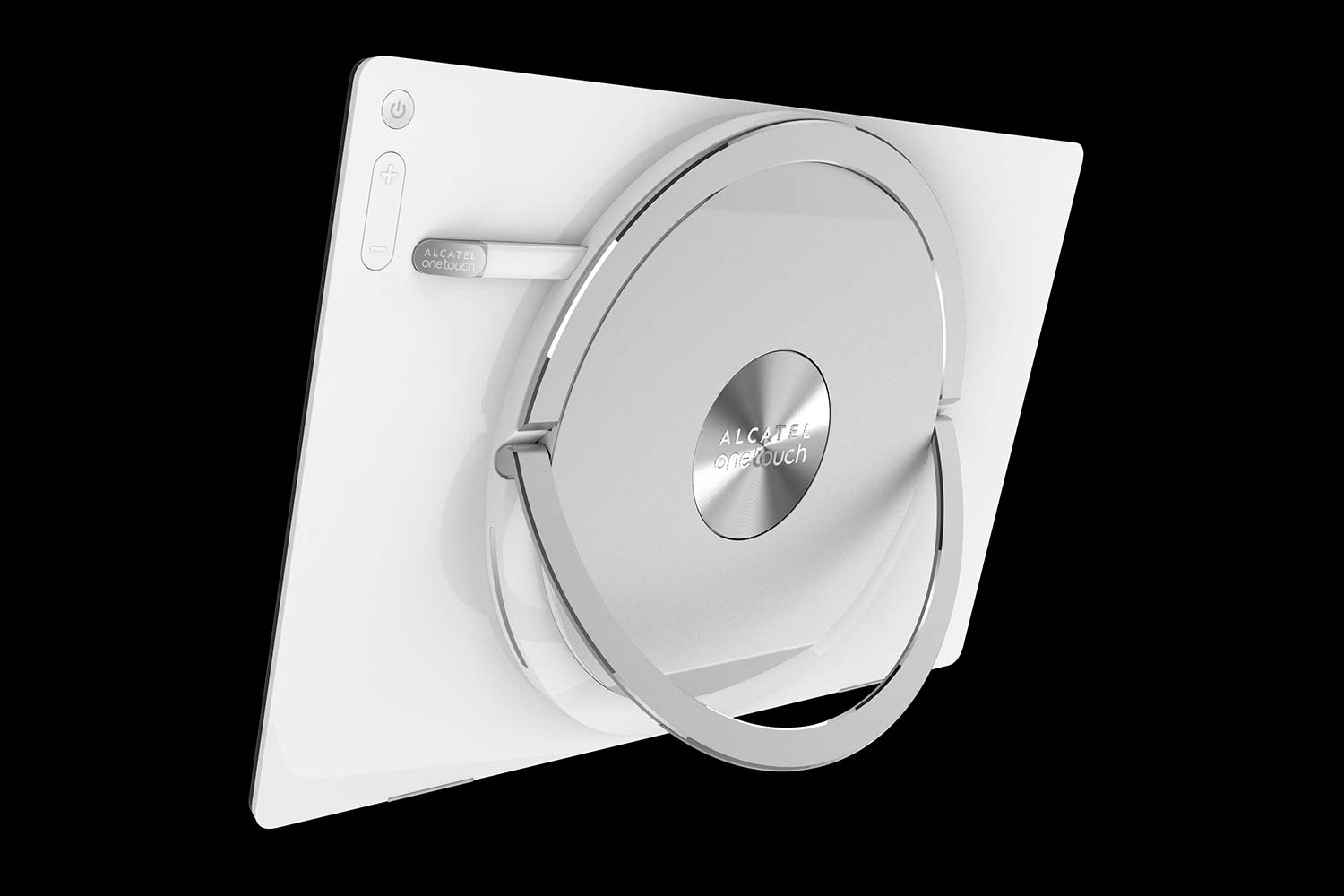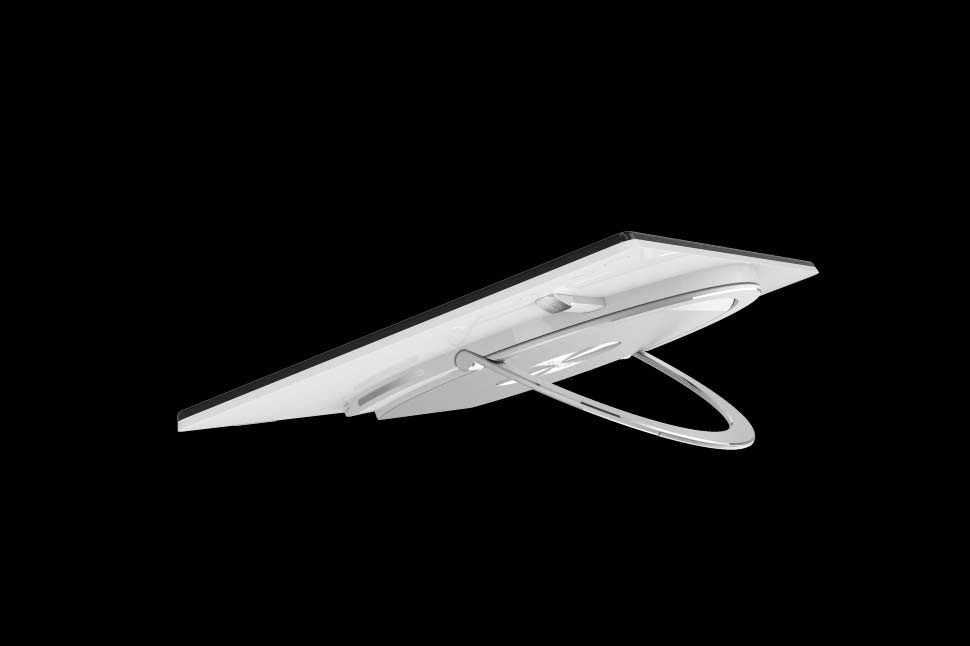Alcatel’s Xess is a small TV masquerading as an Android tablet with its gigantic 17.3-inch screen and powerful JBL speakers.
The name Alcatel chose for its new 17.3-inch tablet, Xess, raises an interesting point. How big is too big for the tablet category? There has been a drop off in tablet sales of late, so perhaps people are looking for something a bit different. If that’s the case, then the Alcatel Xess certainly delivers. This thing is an absolute monster.
It looks like a small, portable TV
The 17.3-inch touchscreen supports multi-touch with up to ten points of interaction and features a full HD display. It looks great, and there’s no doubt that it will be fantastic to watch Netflix on. I watched part of a movie, and it felt more like a small TV than a tablet.
Entertainment demands good sound quality too, and the Xess was able to make itself heard, even on the bustling show floor of IFA. There are two JBL speakers, each with a 3 watt output, on the back. Front-facing speakers might have been better, but when you have a tablet this big, you don’t want to do anything to extend the size.
At first glance there’s nothing special about the look of this tablet, other than its size, but as you move round the back, you begin to see some major differences. There’s a circular, metallic frame stuck to the back that serves as a handle for carrying the Xess and a stand that can be set to different angles.
Alcatel’s idea is that you might carry it round the house to wherever you need it, but this thing is seriously heavy. In the middle of the circular base there’s a smaller disc that can pop out to reveal two USB ports for accessories and a standard 3.5mm headphone port. There’s a power button and volume controls at the top right.
Further down on the left, there’s a magnetic charging port. You may imagine that a screen this size would be a serious power guzzler, and you’d be right. The Alcatel Xess is packing a 10,000mAh battery, but even with that I noticed that all of the display models were seriously low on power.
Sluggish performance, but cool gesture controls
As for performance, the Xess is decidedly sluggish. It is still in development, so I’ve been assured the kinks will be worked out before the CES release in January, but it did stutter a fair bit playing Fruit Ninja and just generally had problems navigating around.

The Xess runs Android 5.1 Lollipop with a few additions. Alcatel has been developing some apps in-house with the aim of showing off what a tablet this size might be capable of. There was a cooking app with recipes and instructional videos, a sketch app for artists, and there was also a gesture system, so you can stop and start video without touching the screen. Waving skips to the next or previous video, a closed hand stops the action, and by placing a finger to your lips, you can get the Xess to mute. It wasn’t working perfectly, but it’s a nice idea that could definitely add some value.
Conclusion
For me, the Alcatel Xess actually feels more like a portable TV that happens to run Android than a tablet. I could imagine having one in the kitchen, and the fact it doesn’t need to be plugged in means you could use it in the garden or to watch a movie in the bath.
Alcatel has another few months to work on the Xess with a likely release date some time after CES in January 2016. The price point is going to be a major decider in whether this tablet takes off. It’s liable to cost somewhere around $700 or $800. Will people be wiling to spend that much on a family tablet for the home? We’ll find out next year.
Highs
- Huge 17.3-inch screen
- Android 5.1
- Alcatel gestures
Lows
- Really heavy
- Sluggish performance
- Expensive






